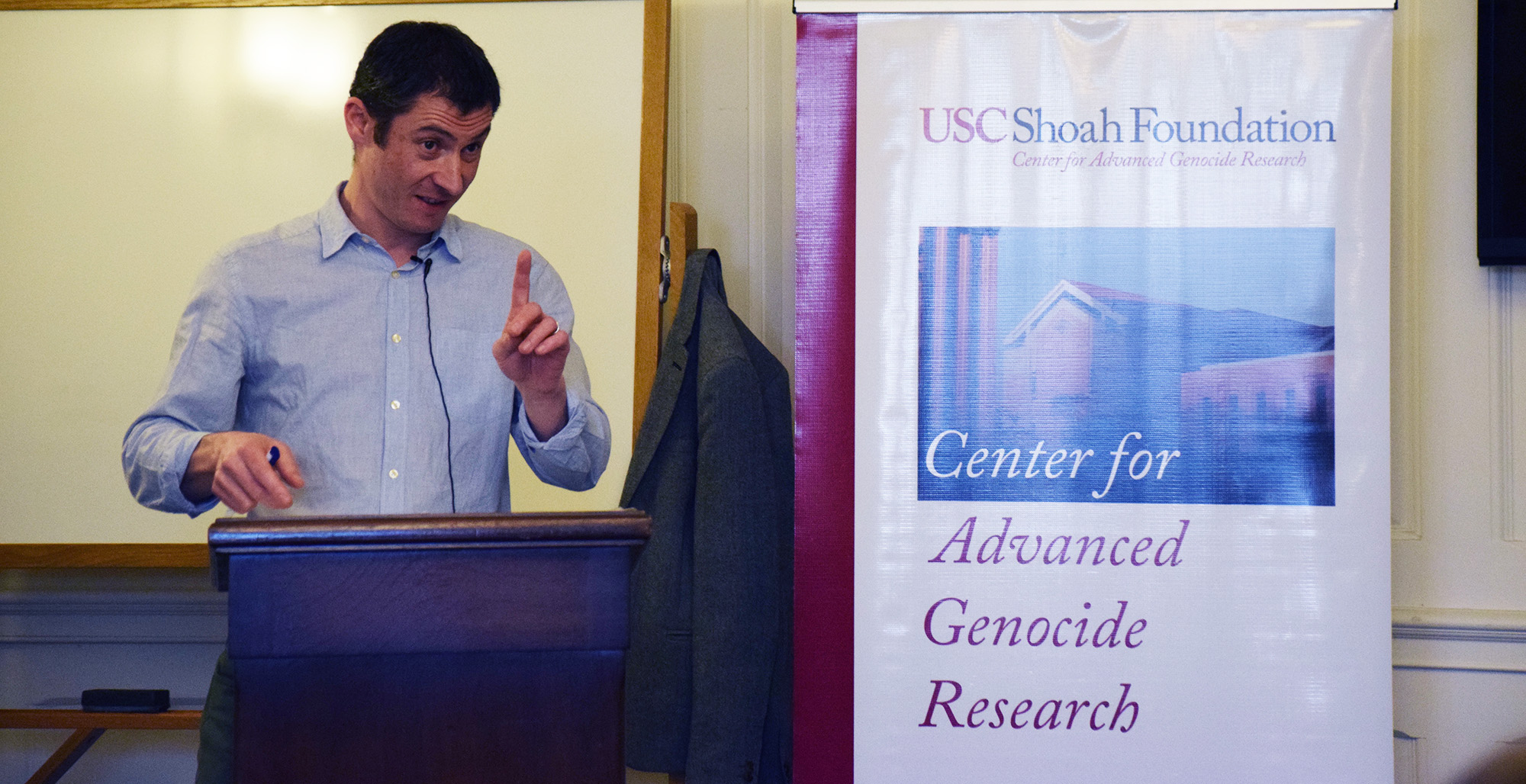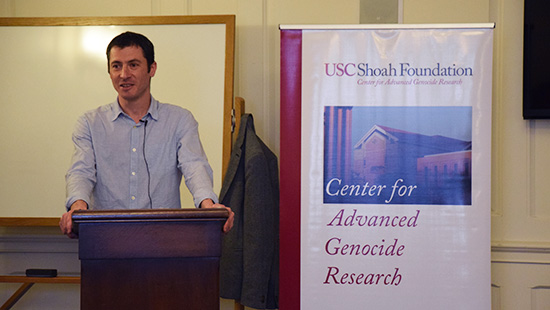Dan Stone Gives Global History of Concentration Camps


In his lecture at USC Shoah Foundation Center for Advanced Genocide Research March 29, Professor Dan Stone offered a global perspective of the origins and history of concentration camps.
The lecture was organized in conjunction with the UCLA Alan D. Leve Center for Jewish Studies.
Stone, author of over a dozen books and 70 articles and professor at Royal Holloway, University of London, explained that he is currently working on a book that will be, like his lecture, a condensed history of concentration camps around the world – with only brief focus on the Nazi camps and Soviet gulags. His goal is to address whether the ideas for “concentration camps” were passed down through time, shared transnationally, or developed spontaneously, and attempt to define what exactly a concentration camp is.
Stone began by giving the definition he created for “concentration camp”: “An enclosed site used to hold against their will, without due legal process, a group of civilians deemed unwanted by a regime.” He said that despite popular imagery of barbed wire and guard towers, there is no archetypal camp – it “need not look like Dachau,” he said, to be considered a concentration camp. He also considers concentration camps separate and distinct from Nazi “death camps,” where people were sent for the specific purpose of being killed and few were actually meant to live there.
Stone discussed where the idea for the modern 20th century concentration camp came from. One possibility are the camps employed by British colonizers across the Empire in the 19th century, in places like South Africa, the Philippines and Cuba, to control the native populations. These camps were often used for slave labor and for “ethnic and political cleansing,” Stone said.
However, Nazi camps and gulags were more likely a direct result of the camps seen during World War I for POWs and displaced civilians across Europe, in places like Germany and Italy – “laboratories for concentration camp development,” Stone said. The camps were harsh and people often went hungry. These camps, which housed refugees and other foreign-born people, reflected the state’s paranoia about “enemies of the state” and its desire to maintain racial homogeneity.
The Armenian Genocide also employed a similar system. People were driven into the Syrian desert and left to die – not for punishment or because they were criminals (criminals don’t belong in camps, Stone said, because they are subject to due process of the law, which makes them harder to kill than civilians), but because the state wanted to get rid of them.
“They represent the power and nature of the 20th-century state when it was felt to be under threat,” Stone said. “People are held against their will because of who they are.”
Concentration camps did not disappear after World War II, however. Stone described several other examples of concentration camp systems around the world, such as British and French camps in Kenya and Algeria in the 1950s, Japanese American internment camps during World War II and Communist China’s Laogai system, which was only formally abolished in 2013.
Concentration camps of the 20th century were an expression of fascist states at a certain historical moment, Stone concluded. As modern states emerged out of older empires, concentration camps were spaces for social cleansing and internal politics – a warning to the larger population to stay in line. They represent the state’s political and social insecurities and also the public’s indifference to the suffering of others.
“Concentration camps have not disappeared,” Stone said. “They are an all too ubiquitous characteristic of the modern world.”